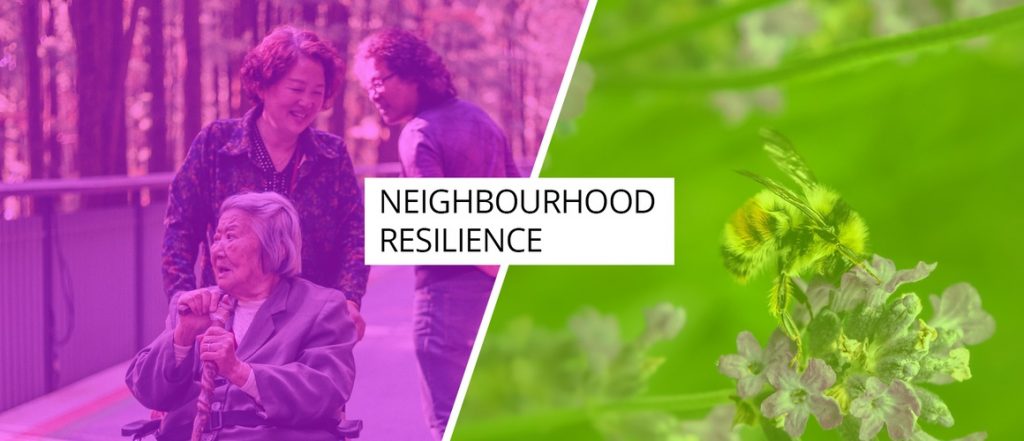As part of our From Prevention to Resilience project, we have organized a three-session LIVECAST series ‘Designing for Neighborhood Resilience’, where we will explore design perspectives in which social and ecological issues are addressed in an integral way.
LIVECAST series will take place at the Pakhuis de Zwijger, where various experts will join the conversation, and concrete design cases will serve as the basis for dialogue. Central questions are: how can designers create the conditions in order for neighborhood resilience to emerge? How can we include non-human residents (such as plants and animals) within our scope? And what is the value of such a ‘nature-inclusive’ perspective on neighborhood resilience?
SESSION #1: From Covid crisis to post-Covid resilience
During this first LIVECAST session, we look for social and ecological design principles that can help us to take steps toward more resilient urban neighborhoods. We will do so by exploring the interconnectedness between social and ecological issues, thereby approaching resilience not only from a human point of view, but also including the needs and contributions of other-than-human residents in our cities. Together with researchers and experts, we discuss the challenges and opportunities of bridging and integrating these different perspectives when designing for resilient neighborhoods.
Speakers:
- Boudewijn Boon, Postdoctoral Researcher at AUAS – Civic Interaction Design ;
- Beitske Boonstra, Researcher in Public Administration and Sociology at Erasmus University Rotterdam;
- Nienke Sluimer, Urban planner & advisor at STIPO;
- Cécile Espinasse, Artist and social designer, founder of studio Living Matters.
SESSION #2: Neighborhood resilience in practice
With the research project ‘From Prevention to Resilience’, we are exploring how public space and civic engagement can contribute to more resilient urban neighborhoods. How to enable local communities to resist, adapt and transform in the face of crises such as the Covid-19 pandemic, global warming and biodiversity loss. Over the past months, this exploration has resulted in the development of a nature-inclusive design framework, which challenges and enables urban designers to not only consider ‘human’ residents within their scope but also ‘other-than-human’ residents. Furthermore, three professional design teams have applied the framework for a case in Holendrecht. During this second public event, we will discuss what this framework brings to the practice of design professionals and how we could use it for new resilient strategies within city planning.
Speakers:
- Frank Suurenbroek, Professor of Spatial Urban Transformation at HvA
- Marion Kranenburg, Sr. Strategy Consultant at housing corporation Eigen Haard
- Thijs de Zeeuw, Natuuroptimist en landschapsarchitect
- Edith Winkler, Architect and initiator of team W. a collaboration with lotte de Haan, Hedwich Hooghiemstra, Nadia Pepels and Floor van Ditzhuyzen
- Floor van Ditzhuyzen, Architect, curator and researcher
- Caroline Combé, Hoofdplanoloog bij City of Amsterdam
SESSION #3: Bridging the Divide
In the third and final event of the series, experience design lab ‘UNSx’ (UNStudio) and social design agency ‘The Beach | design with / in community’ share their experiences with integrating these two perspectives to promote neighbourhood resilience. What value was created by integrating these different perspectives? Which obstacles and challenges emerged while doing so? And what lessons were learned that can inform future design practices for more resilient neighbourhoods?
Speakers:
- Indira van ‘t Klooster (Arcam),
- Filippo Lodi (UNStudio),
- Emiel Wolf (The Beach)
- Giulia Gualtieri (AUAS – Civic Interaction Design).



